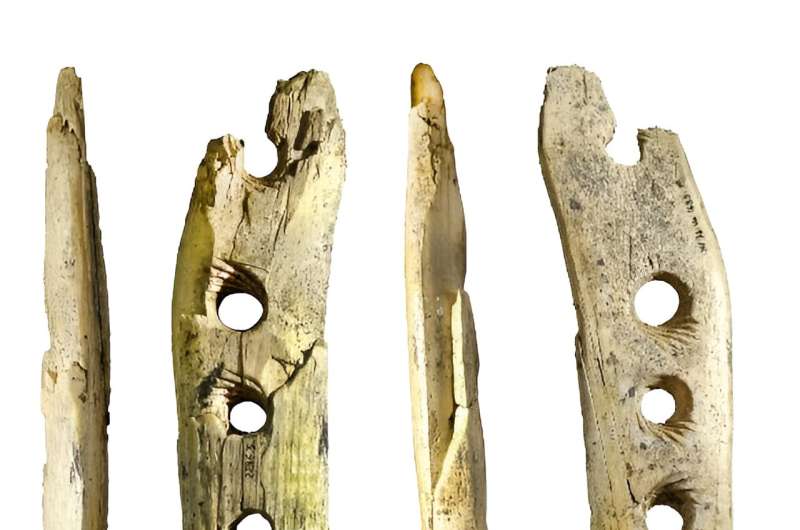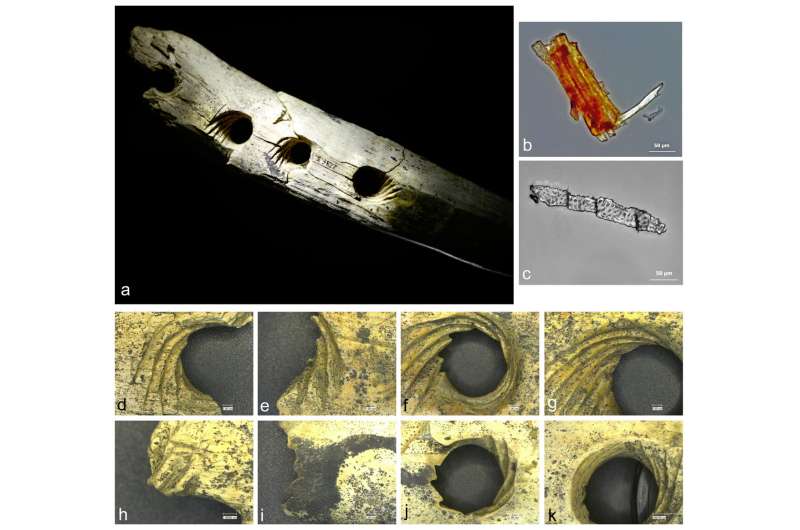February 1, 2024 report
This article has been reviewed according to Science X's editorial process and policies. Editors have highlighted the following attributes while ensuring the content's credibility:
fact-checked
peer-reviewed publication
trusted source
proofread
Experiments suggest ancient four-holed ivory baton was used to make rope

A pair of historians at the University of Tübingen have found evidence that an ancient baton, thought to be a work of art created by early humans thousands of years ago, is actually a device to assist with making rope. In their study, published in the journal Science Advances, Nicholas Conard and Veerle Rots created a replica of the baton and found that it could easily be used to make rope.
In 2015, multiple pieces of ivory were discovered in a cave in Germany's Hohle Fels, all of which showed signs of workmanship. Dating of the pieces showed they had been fashioned approximately 37,000 years ago, likely by modern humans. Since that time, researchers have believed the ivory pieces were fashioned from a mammoth tusk as works of art. In this new study, the researchers found evidence that at least one of them was instead a baton carved in a way that eased the task of making rope.
Prior research has shown that early humans were making rope thousands of years ago, and were living in the part of Germany where the batons were found. One of the pieces, a baton approximately 21 cm long, looked to the researchers like a modern cricket bat with four holes carved through its flattest part.
Working on a hunch, the researchers studied the baton and found wear on the edges of the holes, along with groves, indicating that something had been repeatedly pulled through them. Residue on the hole walls suggested that it was some sort of plant material.

Convinced that the baton had been used to make rope, the researchers created a replica of the baton and then tried to use it in that way. They experimented with several materials, including nettles, willow, linden, cattail, hemp, flax and deer sinew. They found that the baton would have worked well for such a purpose.
Making rope involves twining, like braiding hair, using multiple strands. To make rope using the baton, individual strands were passed through the holes, which kept them in place. As the strands were fed through together, a person on the opposite side would twine them together, resulting in a well-formed rope.
More information: Nicholas J. Conard et al, Rope making in the Aurignacian of Central Europe more than 35,000 years ago, Science Advances (2024). DOI: 10.1126/sciadv.adh5217
Journal information: Science Advances
© 2024 Science X Network


















